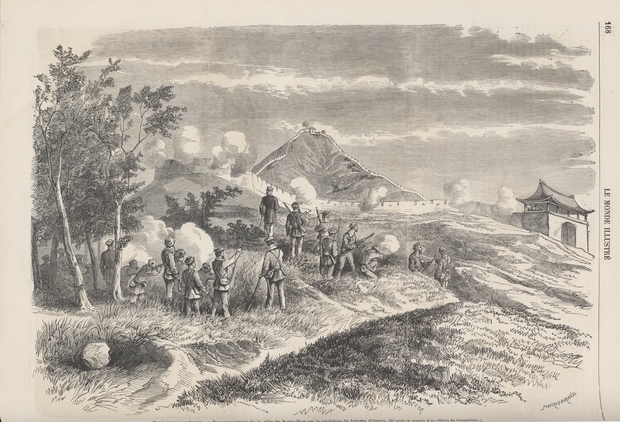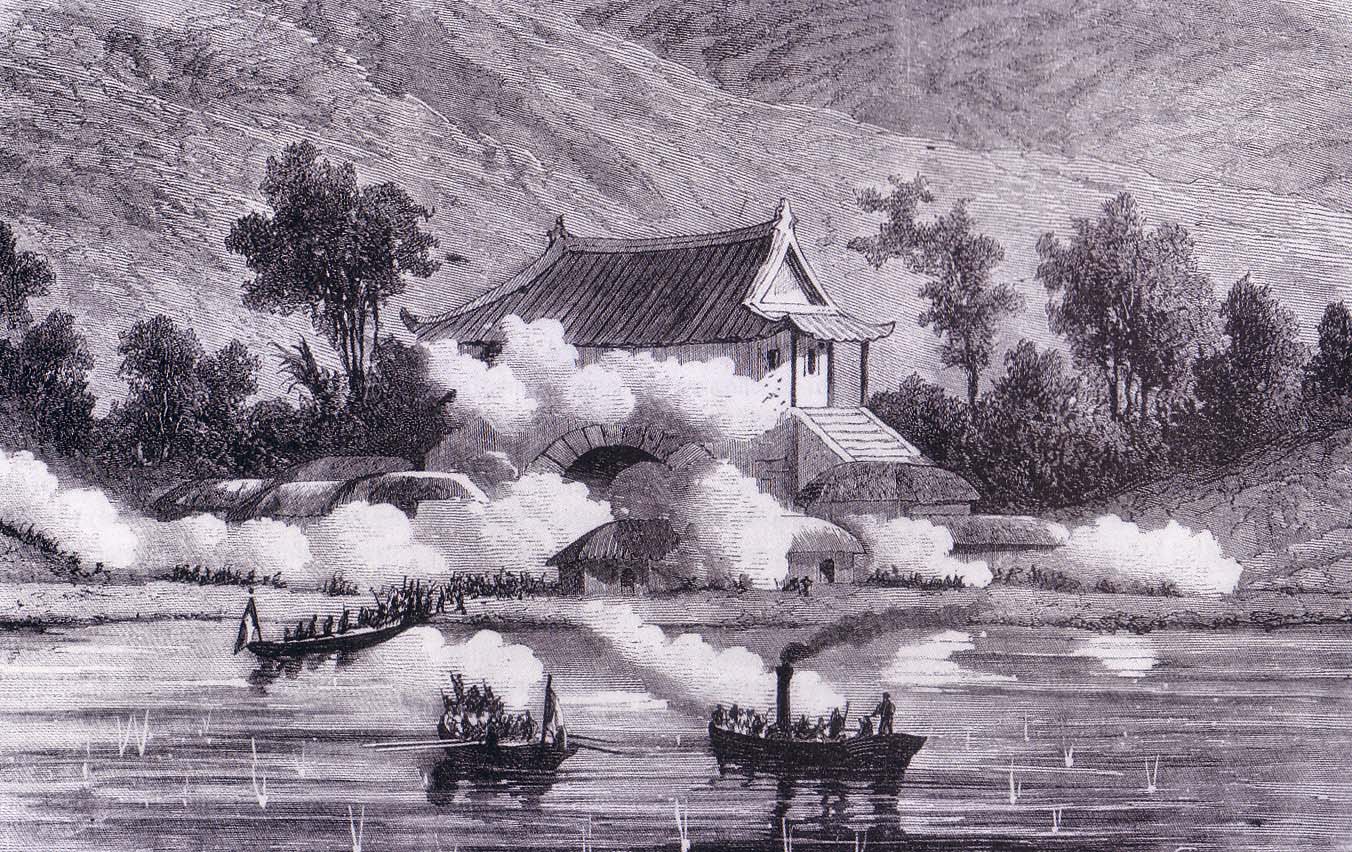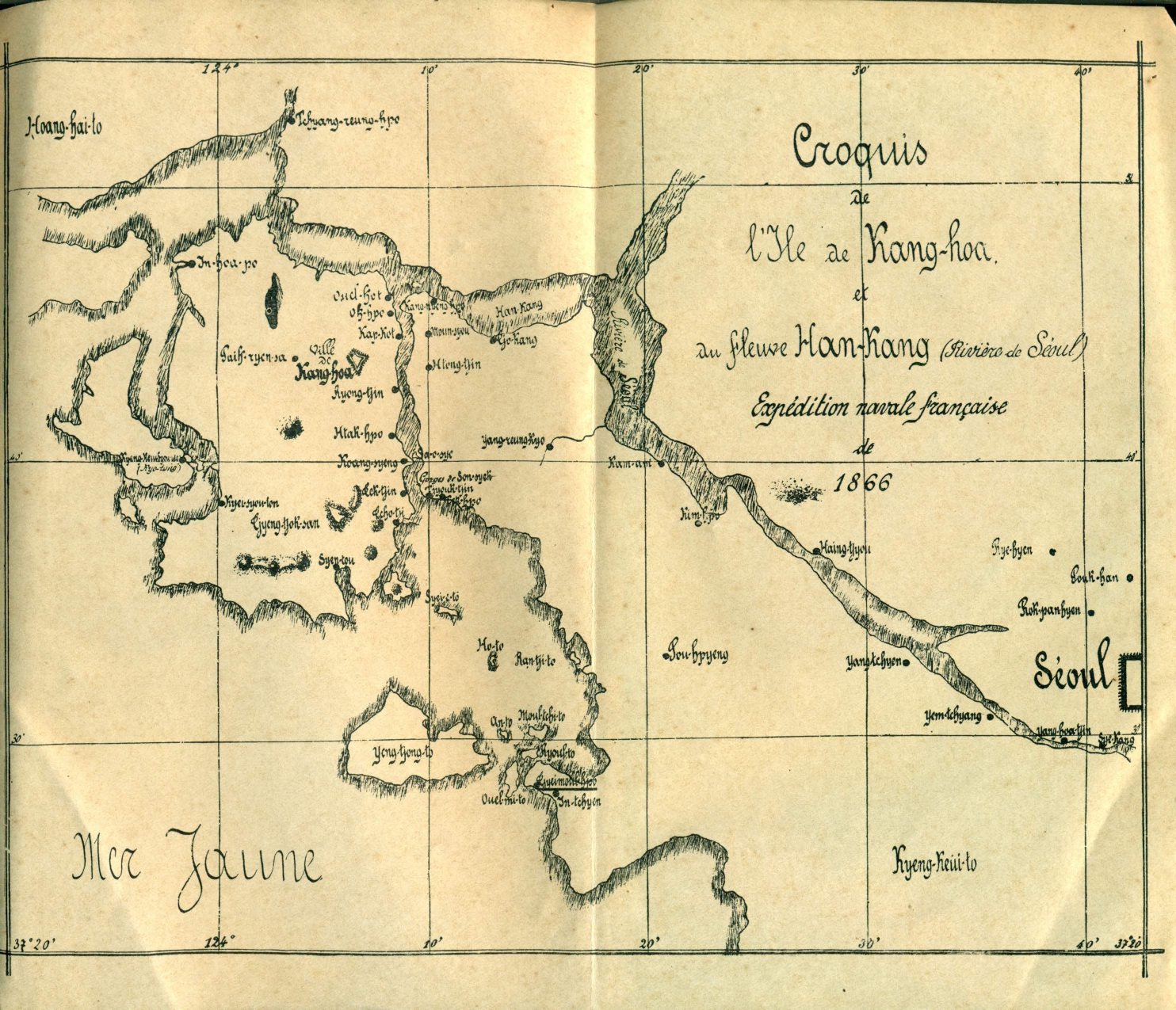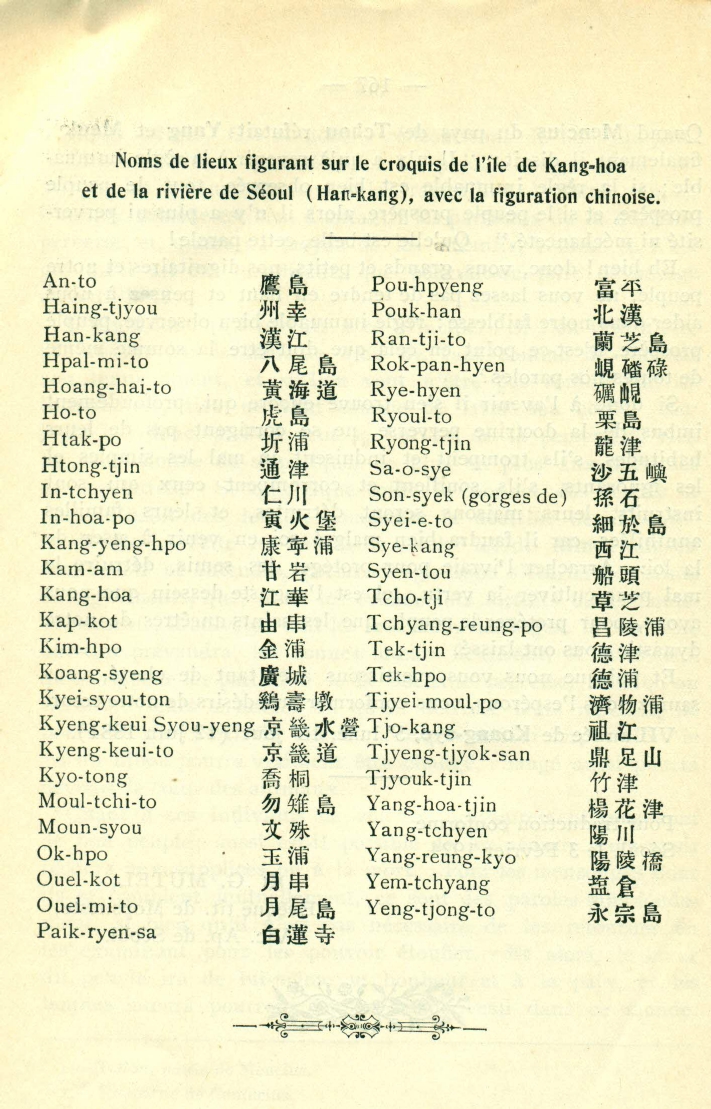
October 15, 1866 Reconnoitering prior to attack

October 26, 1866 Ambush!

 October 15, 1866 Reconnoitering prior to attack |
 October 26, 1866 Ambush! |
 Novermber 11,
1866 Farewell!
|
 |
 |
Byeongin Yangyo, the French
expedition against Korea of 1866
October 3, the 3 ships return to Chefoo,
the 2 smaller ones having reached a point on the Han
River (Yanghwajin / Hapjeong-dong) from where the
walls surrounding Seoul were visible.
October 11, the full expedition sets sail
from Chefoo. October 13, the ships anchor close to
Woody Island (l’île Boisée, today known as
Jakyak-do?), to the South of Ganghwa Island, just off
the coast to the south of Incheon. October 14, Admiral Roze with 5 ships
sails up the “Salt River” (the strait separating
Ganghwa Island from the mainland) and arrives at
Gapgotjin, the village on the island’s coast from
where a road leads to Ganghwa city. The French force
lands there, and occupies the houses of the village
for their lodgings, the inhabitants having fled.
October 16, the French forces enter
Ganghwa city after a brief skirmish; the garison and
population flee. The following days are taken up with
a search through the government store rooms, where a
large quantity of silver is found. The Royal Uigwe
books and other precious objects are chosen to be sent
back to France. Then a systematic destruction of
weapons and stocks of gunpowder in the various nearby
forts is undertaken. October 21, a survey of the northern
shore of Ganghwa is made. October 26, a reconnaissance party lands
on the mainland side, close to the South Gate in the
wall of the Munsusanseong fortress, which marked the
start of the road leading to Seoul. They are fired on
by soldiers hiding in ambush on the gate and three
French sailors are killed. A brief exchange of fire
kills a number of the Koreans, the others flee. The
French open fire with cannon at Korean forces seen
emerging from behind hills a mile or two away. They
burn the pavilion topping the gate and the houses
around it.
November 8, there are reports of large
numbers of Korean troops crossing onto Ganghwa at the
level of Gwanseong fort. November 9, a lightly-armed force of
about 120 French set off on foot to reconnoiter the
fortified temple of Cheondeung-sa. It seems deserted
but as they approach the main gate they come under
heavy musket fire. Many are wounded, though none are
killed, and they return to camp that evening.
November 11, the French withdraw from
Ganghwa Island after burning the palace and official
buildings. All the ships are now anchored near Woody
Island (near Incheon). November 16, Fathers Féron and Calais
(the other 2 surviving priests of the Korean mission)
arrive on a French ship from China, having sailed
across to China from Korea in October. November 18, the planned departure is
delayed by a storm. November 21, the French ships set sail in
different directions, some headed for Japan, others
for China. Henri Zuber's record of the expedition and other images. Aged 22, Henri Zuber was a junior officer on the expedition with a gift for drawing. In addition to published engravings made from his drawings, he left 2 reports of the expedition, which he did not approve of. Returning to France, he resigned from the navy and became a professional artist, especially celebrated for his watercolors. 1. Life and family history of Jean Henri Zuber 2. English translation of the letter written by Henri Zuber (to his mother?) preserved by Jeanne Frey and transcribed by Henri Ernest Zuber (also a PDF file of the transcript) (1901-1967), about the events on Ganghwa Island, based on his journal. 3. English translation of an account of the expedition written by Henri Zuber some years later and published in Le Tour du monde illustré, 1873, T. XXV, p. 401 – 416. 4. The illustrations used in the article in Le Tour du Monde 5. Engravings of drawings by Henri Zuber published in other reviews, almost all in 1867. 6. A series of other images related to the 1866 expedition. Major French Texts Related to the 1866 Expedition (PDF files) 1. The main reports on the Expedition written by Vice-Admiral Roze during the campaign 2. Charles Dallet. Histoire de l'église de Corée : Deuxième partie from page 572 3. L’expédition de Corée en 1866: Episode d'une station navale dans les mers de Chine, Par M. H. Jouan 4. Elisée-Julien Cheval. Relation médicale d'une campagne au Japon, en Chine et en Corée 5. Campagne Navale dans les mers de Chine et du Japon du 5 mars 1865 au 9 mars 1868 par Adolphe Louis Victor Mazie 6. Note sur une récente exploration du Hang-Kyang en Corée Par Le Vicomte Tristan de Rostaing A Book Containing English Translations of all the French Documents with a linking narrative etc has been prepared for publication |